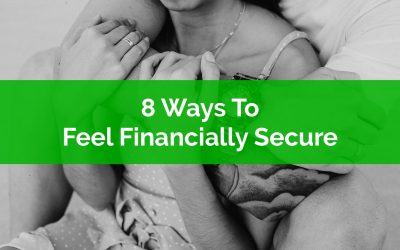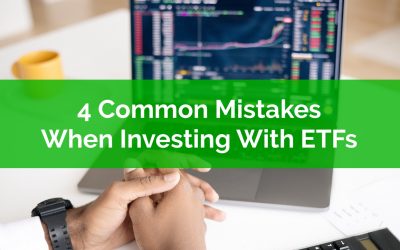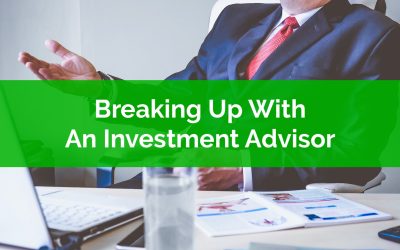Thank you for joining the waitlist!
You’re on the list for early access!
We will contact you via email when we’re ready for you to start your self-directed financial plan. In the mean time here is a quick preview…
Check out our latest blog posts…
8 Ways To Feel Financially Secure
Feeling financially secure has nothing to do with how much money you have, or how much money you earn, feeling financially secure is all about how you feel about your finances, how you manage your finances, and your attitude towards money in general.
Financial insecurity is a very common feeling. It affects both low-income and high-income households, it affects both young and old. In fact, according to a recent FP Canada survey, at least half of us are affected by financial stress in some way.
“Half (50%) of Canadians say that financial stress has impacted their life in at least one way, with health issues (18%), marriage/relationship problems (15%), distractions and reduced productivity at work (14%), and family disputes (13%) the most common ways stress affects them.” Source.
When talking about financial security, it’s important to differentiate between BEING financially secure and actually FEELING financially secure. It’s possible to BE financially secure but not FEEL that way. It’s possible to be in a good financial position but without the right knowledge, routines and plans, it may not actually feel that way.
In this post we’ve outlined eight things you can do to FEEL financially secure (even if you still have the exact same income, spending, and savings).
4 Common Mistakes When Investing With ETFs
Investing with ETFs has become commonplace over the last 5-10 years, and with good reason, investing with ETFs can provide an easy, low-cost, highly diversified way to create an investment portfolio. But with all the attention ETFs have been getting, it’s understandable that mistakes are being made when self-directed investors are implementing their ETF portfolios.
As an advice-only financial planner, we work with a lot of self-directed investors who want to create a more detailed financial plan. We see a lot of investment portfolios, some of which are excellent, and some with opportunities to improve.
ETF investing has become popular thanks to personal finance bloggers like Canadian Couch Potato. By copying a simple 3-4 fund Canadian Couch Potato portfolio, it’s easy to create a simple, low-cost, and highly diversified investment portfolio.
This low-cost index investing approach is typically what people are referring to when they talk about ETF investing. The issue is that this nuance/detail is often not mentioned or glossed over when ETFs are discussed in the media/newspapers/online forums etc.
The result is that there are many self-directed investors who are keen to use ETFs but are making “mistakes” that could increase their investment fees, decrease their level of diversification, increase their level of risk, or decrease their long-term returns.
Mistakes is in quotations because these are only mistakes when compared to a simple 3-4 fund portfolio (or an even simpler all-in-one portfolio). Some investors may not think these are mistakes at all, but I would challenge any self-directed investor to watch out for the mistakes below, and carefully consider if they may be making some or perhaps all these mistakes when creating an investment portfolio.
Breaking Up With An Investment Advisor Is Hard To Do
Over the last few years the number of low-cost investment options has exploded in Canada. There are new and easy ways to create a low-cost diversified portfolio that isn’t dragged down by high investment fees.
There were always low-cost, do it yourself options, but they required a fair amount of manual work to make contributions, invest those contributions, and rebalance periodically (and let’s not forget, the stress of keeping yourself on course during a correction or recession).
But now there are new options available. In addition to a low-cost ETF portfolio or a low-cost mutual fund portfolio, there are options like low-cost “all-in-one” ETFs and low-cost robo-advisors.
These new options provide investors with new ways to invest in a low-cost portfolio without necessarily doing all the work themselves.
This has understandably put a lot of pressure on investment advisors who have historically charged extremely high fees on the investment products they sell.
The average investment fee on a mutual fund portfolio in Canada is around 2.3%. This can cause an enormous amount of drag on an investment portfolio. A $1,000,000 investment portfolio would experience a $23,000 annual drag from investment fees! That has a direct impact on how much retirement income you can create from your investment portfolio.
But switching from a high-priced mutual fund portfolio can be hard to do.
Even with the high fees, traditional investment options continue to dominate the investing landscape in Canada, but things are starting to change. For the first time ever, ETFs have outsold mutual funds. More money is flowing into ETFs than into mutual funds (bear in mind that you can also have high-priced ETFs, and low cost mutual funds, so this isn’t necessarily the best indicator).
But… if these low-cost investment options have been around for a while, why the slow change? Why aren’t more people switching?
There are three main risks people face when making a change of this kind, financial risk, emotional risk, and social risk. These risks can be difficult to overcome. Let’s understand each one and why they make breaking up with an investment advisor hard to do…



